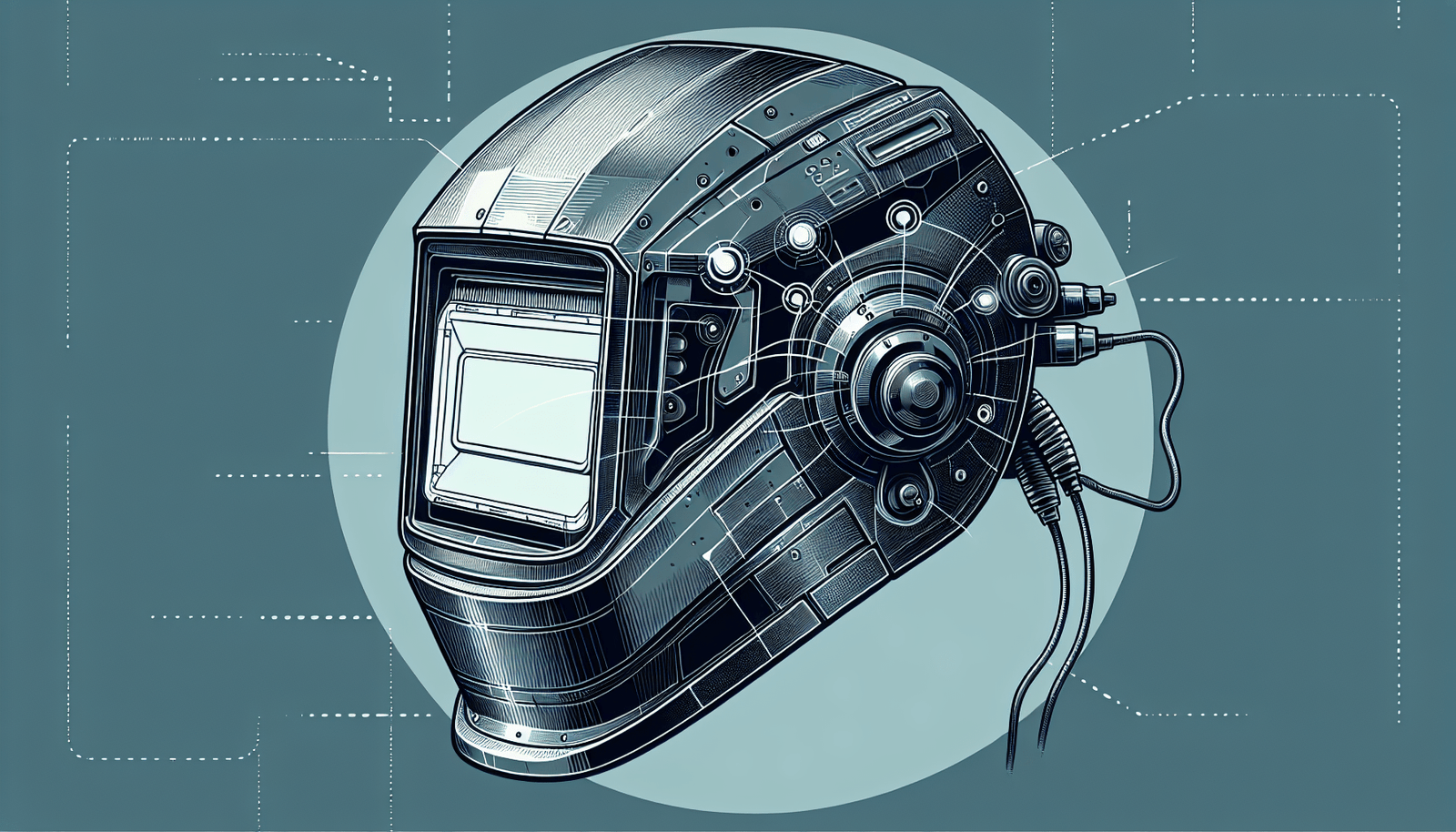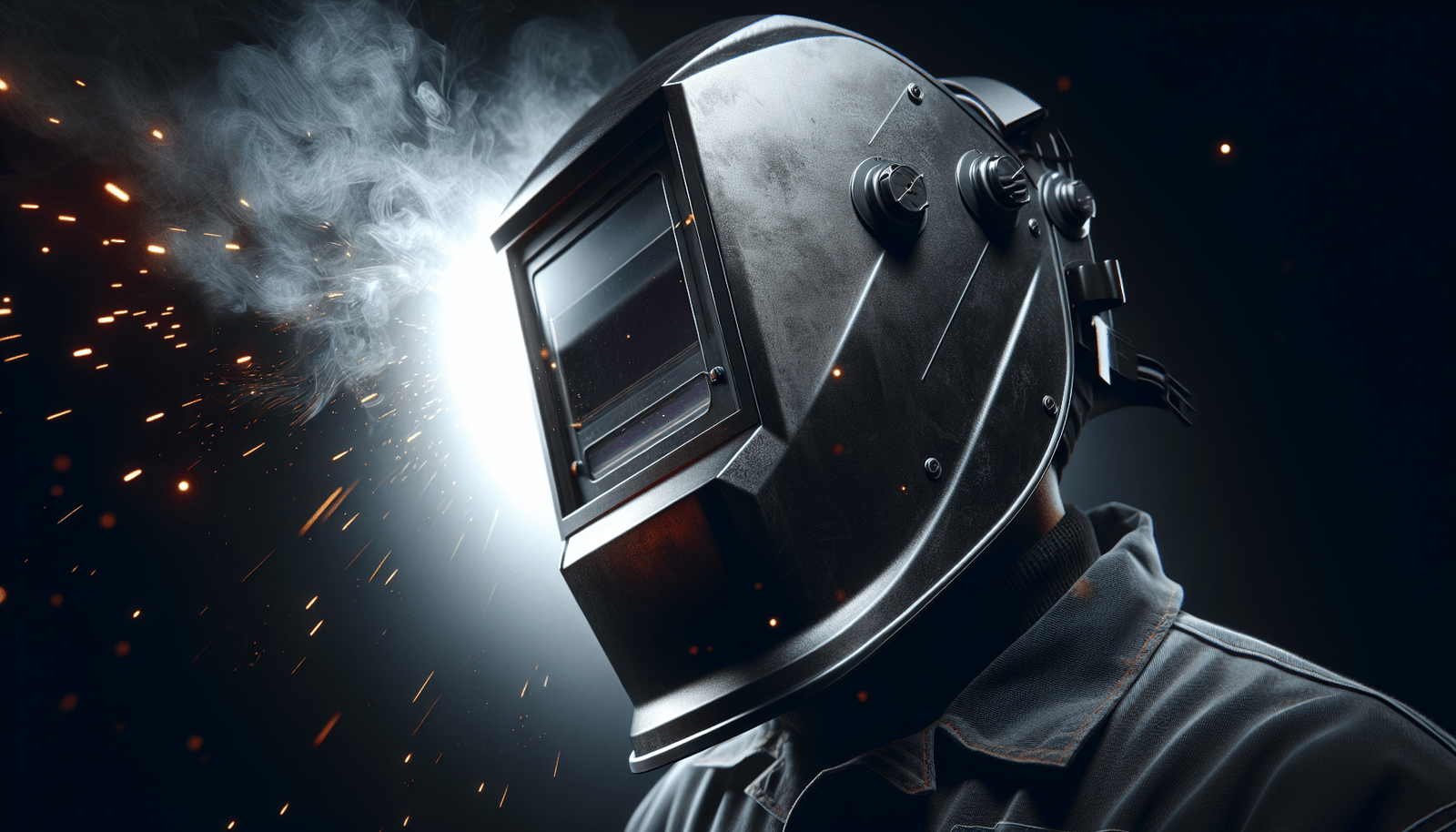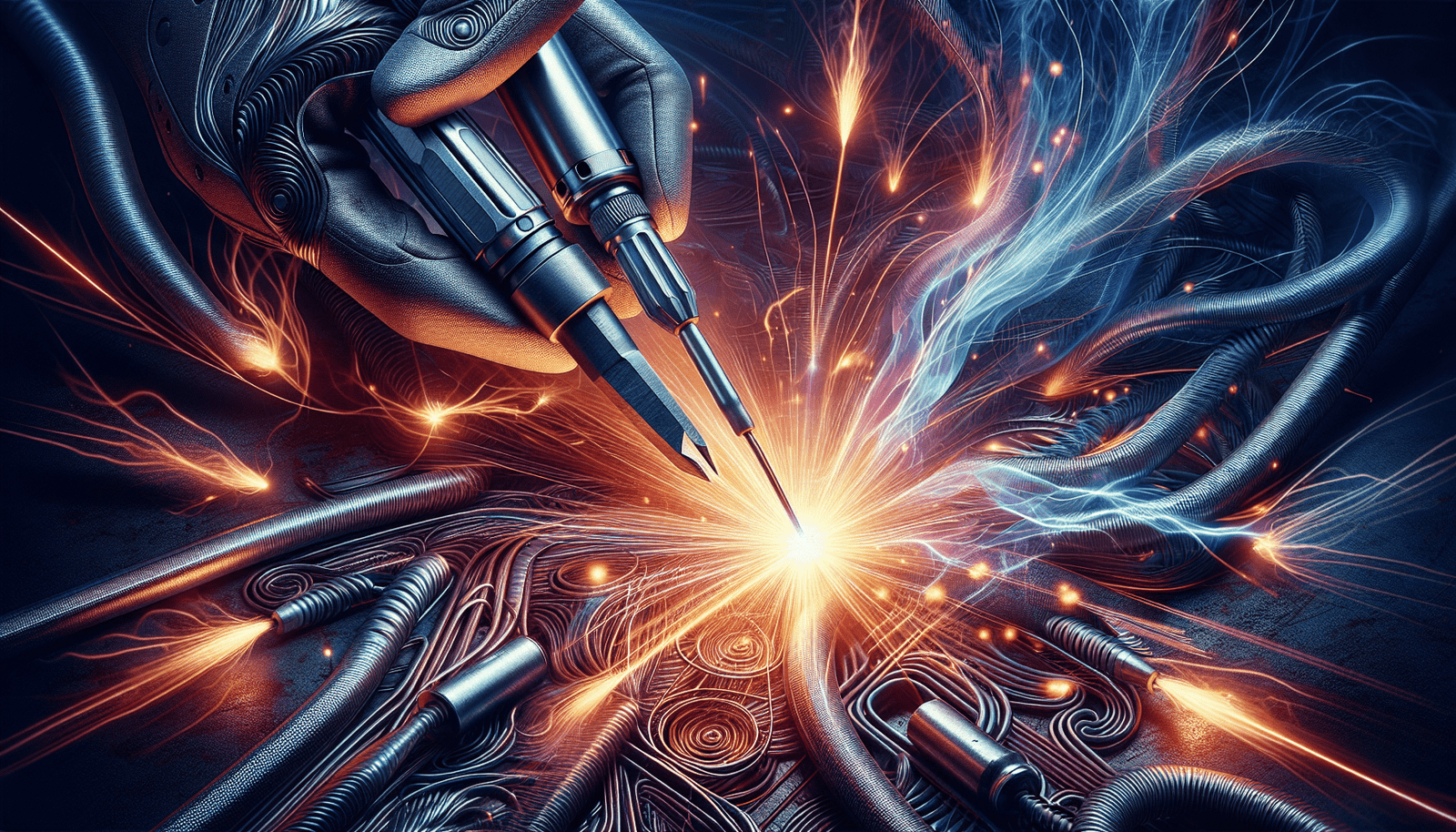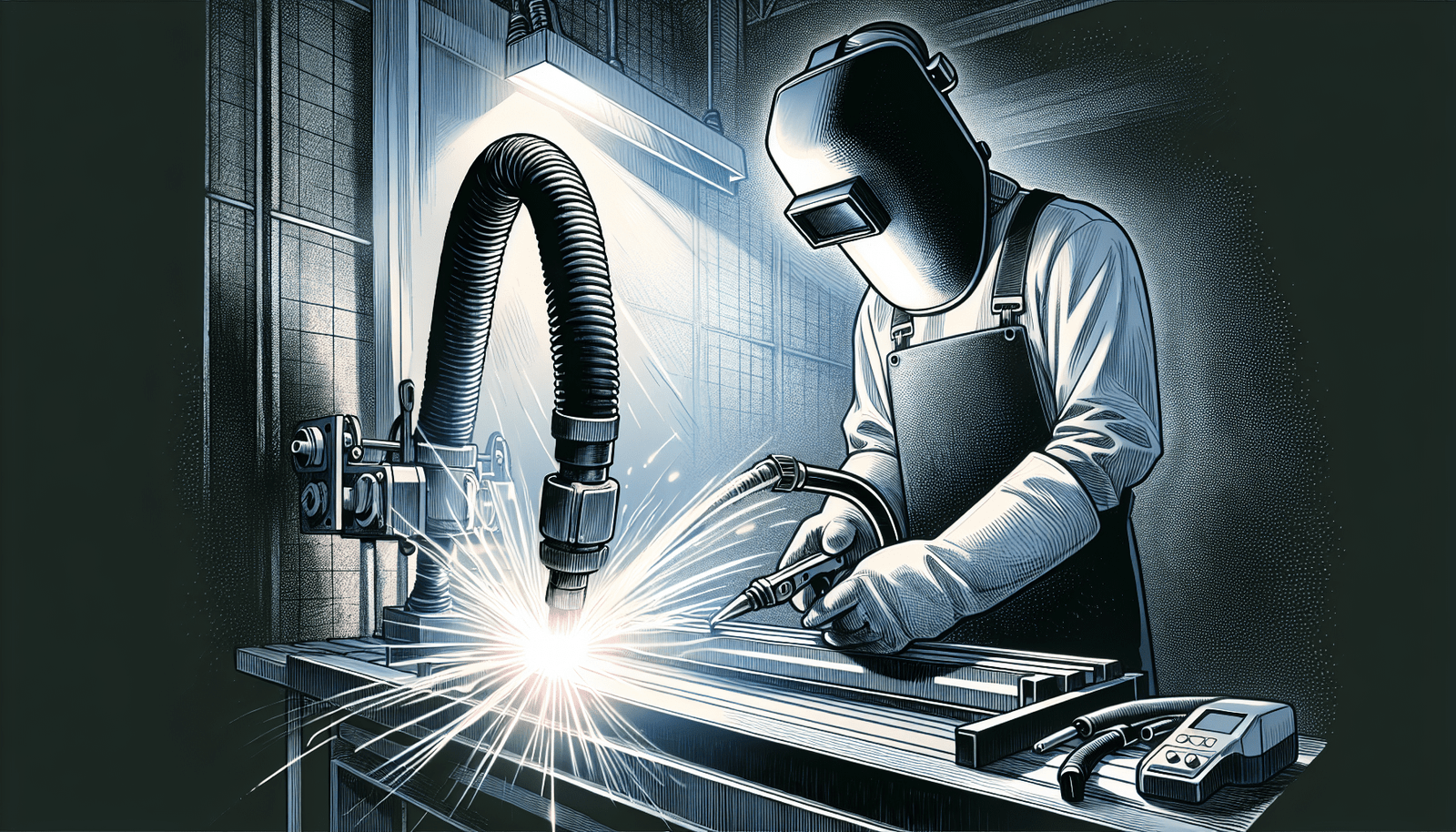Are you in the market for a new welding helmet but feeling overwhelmed by the sheer number of options available? Don’t worry, we’ve got you covered! In this article, we will guide you through the process of choosing the right welding helmet for your needs. Whether you are a seasoned professional or a beginner, we will provide you with all the essential information to make an informed decision. So, let’s dive right in and find the perfect welding helmet that will keep you safe and comfortable during your welding projects!
How To Choose The Right Welding Helmet
Understanding Your Welding Needs
When it comes to choosing the right welding helmet, it is crucial to first understand your specific welding needs. This will help you make an informed decision and ensure that the helmet you choose meets your requirements perfectly. Here are a few factors to consider:
Identify frequency and type of welding
Start by assessing the frequency at which you will be welding. Are you a professional welder who works on a daily basis, or do you only weld occasionally for your personal projects? This will help you determine the durability and quality you need in a welding helmet.
Additionally, consider the type of welding you will be primarily engaged in. Are you working with MIG, TIG, or Stick welding? Different welding techniques require different levels of protection and visibility, so it’s essential to identify your specific welding method.
Determine the welding conditions and environment
The welding conditions and environment play a significant role in determining the ideal welding helmet for your needs. Are you working indoors or outdoors? Will you be exposed to bright sunlight or extreme temperatures?
Understanding the conditions under which you will be welding is crucial for choosing a helmet with the appropriate features. Some helmets are specifically designed for outdoor use and have features like solar-powered lenses, while others offer better insulation for extreme temperatures.
Understanding the risks of your specific welding task
Every welding task comes with its own set of risks and hazards. Before selecting a welding helmet, take the time to identify the specific risks associated with your welding task.
For example, if you’re working with high amperage welding, you may need a helmet that provides extra protection against intense light and heat. On the other hand, if you’re involved in overhead welding, you might want a helmet with good neck and head support to reduce strain.
By understanding the risks involved in your specific welding task, you can prioritize the features and safety standards necessary for your helmet selection.
The Importance of Safety Standards
Safety should always be a top priority when it comes to welding. Welding involves exposure to intense heat, bright light, and harmful fumes, making it crucial to choose a welding helmet that meets the necessary safety standards. Here are a few key considerations:
Standards for eye and face protection
Welding helmets are designed to protect your eyes and face from the hazardous effects of welding. Look for helmets that comply with safety standards for eye and face protection, such as those outlined by regulatory bodies like the Occupational Safety and Health Administration (OSHA).
These standards ensure that the helmet provides adequate coverage, optical clarity, and physical protection against sparks, debris, and intense light. Always prioritize helmets that meet or exceed these safety standards.
American National Standards Institute (ANSI) standards
The American National Standards Institute (ANSI) sets specific standards that address various aspects of welding helmet safety. These standards cover areas such as lens performance, optical quality, and impact resistance.
When selecting a welding helmet, look for ANSI-approved models. ANSI standards ensure that the helmet has undergone rigorous testing and meets the necessary safety requirements.
International standards and accreditations
In addition to ANSI standards, there are various international standards and accreditations that certify the safety and quality of welding helmets. For example, the European Union may require helmets to comply with the European Standard EN175.
Always check if the helmet you’re considering has been accredited by international organizations. These accreditations provide an added level of assurance that the helmet meets global safety standards.
Types of Welding Helmets
Now that you have a clear understanding of your welding needs and the importance of safety standards, let’s explore the different types of welding helmets available in the market. Each type offers unique features and advantages, catering to different preferences and requirements.
Passive Welding Helmets
Passive welding helmets, also known as traditional or fixed-shade helmets, are the most basic type of welding helmet. They have a fixed shade lens that stays dark at all times. When you strike an arc, the lens doesn’t automatically darken but provides a constant level of shade protection.
These helmets are budget-friendly and straightforward, making them a popular choice among hobbyists and occasional welders. However, they require you to manually lift and lower the helmet between welding tasks, which can be cumbersome and time-consuming.
Auto-Darkening Welding Helmets
Auto-darkening welding helmets are a significant advancement in welding helmet technology. These helmets feature a lens that automatically adjusts its shade level based on the light intensity detected. When not welding, the lens remains clear, providing maximum visibility. Once you strike an arc, the lens darkens within milliseconds to protect your eyes.
One of the key advantages of auto-darkening helmets is the convenience they offer. You no longer have to repeatedly lift and lower your helmet, improving both productivity and welding accuracy. These helmets are suitable for both professional welders and hobbyists, providing a balance between safety and ease of use.
Solar Powered and Battery Powered Helmets
Solar-powered and battery-powered welding helmets are closely related to auto-darkening helmets. As the name suggests, solar-powered helmets use solar energy to recharge the batteries that power the auto-darkening lens. This eliminates the need for regular battery replacements, making them more environmentally friendly and cost-effective in the long run.
Battery-powered helmets, on the other hand, rely solely on replaceable batteries to power the lens. They offer the same level of convenience and functionality as solar-powered helmets but may require more frequent battery replacements.
Helmets with Grinding mode
Some welding helmets come with a grinding mode feature, allowing you to switch between welding and grinding tasks without changing helmets. When in grinding mode, the lens remains clear, providing unobstructed visibility while protecting your face from sparks and debris.
If you frequently switch between welding and grinding tasks, consider investing in a helmet that offers a dedicated grinding mode. This eliminates the need to switch helmets, saving both time and effort.
Helmet Weight and Comfort
Since welding often involves long hours of work, it’s crucial to consider the weight and comfort of the helmet. A comfortable helmet ensures that you can focus on your welding tasks without distractions or discomfort. Here are a few factors to consider:
Helmet design and weight
Welding helmets come in various designs, each offering different levels of comfort and weight. Some helmets have a compact and lightweight design, while others provide more coverage and stability but can be slightly heavier.
Consider your personal preferences and the nature of your welding tasks when choosing a helmet design. If you require more protection and stability, a slightly heavier helmet may be worth it. However, if you need a lightweight option for increased mobility, look for helmets that prioritize weight reduction.
Comfort features: padding, adjustable fit, etc.
Comfort features play a significant role in reducing fatigue and ensuring a pleasant welding experience. Look for helmets with ample padding on the interior, as this helps distribute the weight evenly and provides cushioning against pressure points.
An adjustable fit is also crucial for personalized comfort. Look for helmets with adjustable headbands, straps, or ratcheting mechanisms that allow you to customize the fit according to your head size and shape. This ensures a snug and secure fit, reducing the chances of the helmet slipping or causing discomfort.
Impact of long-term use
Lastly, consider the impact of long-term helmet use on your comfort. Welding helmets that are poorly designed or lack adequate ventilation can cause excessive sweating, leading to discomfort and skin irritation. Opt for helmets that prioritize breathability and moisture-wicking features to enhance long-term comfort.
Remember, comfort is not just a luxury but a necessity when it comes to welding helmets. A comfortable helmet allows you to focus on your work and significantly improves your overall welding experience.
Helmet Lens and Visibility
The lens of a welding helmet is arguably its most important component, as it directly affects your visibility and eye protection. Understanding the various factors related to lens clarity and viewing area will help you make an informed decision.
Lens clarity rating
Lens clarity refers to the quality of vision provided by the helmet’s lens. It is determined by factors such as optical distortion, color accuracy, and image sharpness. A high-quality lens should offer clear and distortion-free visibility, enabling you to see the welding area with precision.
When choosing a welding helmet, look for lenses with a high clarity rating, preferably with minimal optical distortion. This ensures that you have a clear view of your welds, allowing for accurate and precise work.
Size of the viewing area
The size of the viewing area determines the extent of visibility you have while wearing the helmet. Larger viewing areas offer a broader field of vision, allowing you to see more of the welding area without constantly readjusting your head position.
Smaller viewing areas, although more cost-effective, may limit your peripheral vision and require more head movement to see the entire work area. Consider the nature of your welding tasks and personal preferences when deciding on the size of the viewing area.
Number of arc sensors
Auto-darkening helmets use arc sensors to detect the light emitted by the welding arc. The number of arc sensors in a helmet directly affects its responsiveness and ability to accurately darken the lens.
Helmets with a higher number of arc sensors provide better coverage, as they can detect the arc from various angles. This ensures that the lens darkens evenly, regardless of your welding position. Consider helmets with a minimum of two arc sensors, but a higher number can provide even better performance.
Lens Shade and Optical Class
Welding helmets offer different shade levels to protect your eyes from the intense light emitted during welding. Understanding shade numbers and optical class is crucial for selecting the appropriate level of protection.
Understanding shade numbers
Shade numbers refer to the level of darkness provided by the lens when it is in the auto-darkening mode. The higher the shade number, the darker the lens will be. Different welding techniques and welding amperages require different shade numbers for optimal protection.
For example, lower amperage welding techniques like TIG welding typically require a lower shade number (around Shade 8-13). On the other hand, higher amperage welding techniques like Stick welding may require a higher shade number (around Shade 10-14).
Choosing the shade for your type of welding
To select the appropriate shade number for your welding helmet, refer to welding standards and guidelines specific to your welding technique. These standards provide recommendations for different welding amperages, helping you choose the shade that offers optimal protection without compromising visibility.
Additionally, consider your personal comfort and visual acuity. A shade number that is too dark may hinder your visibility and make it challenging to see the details of your welds. Strike a balance between protection and visibility when selecting the shade for your welding helmet.
Optical class and its importance
Optical class refers to the quality of the lens in terms of its image distortion and clarity. Higher optical class ratings indicate better overall performance and visual acuity, allowing for precise and accurate welding.
When choosing a welding helmet, look for helmets with a high optical class rating, preferably Class 1. These lenses offer minimal distortion and superior clarity, ensuring that you can see your welds with exceptional precision.
Power Source of the Helmet
The power source of your welding helmet determines how it operates and how you can recharge or replace the batteries. Understanding the different power source options will help you choose a helmet that aligns with your preferences and requirements.
Battery-powered helmets
Battery-powered helmets rely on replaceable batteries as their primary power source. These helmets often have a battery compartment that allows you to easily insert and replace the batteries when needed. Battery-powered helmets are typically more affordable than solar-powered helmets.
When considering a battery-powered helmet, check the expected battery life and the cost of replacement batteries. Ensure that the battery compartment is easily accessible and that the helmet’s overall performance is not compromised by weak or low batteries.
Solar-powered helmets
Solar-powered helmets use solar energy to recharge the batteries that power the auto-darkening lens. These helmets often have solar panels integrated into the helmet’s design, ensuring continuous recharging as long as you’re exposed to sunlight.
Solar-powered helmets eliminate the need for frequent battery replacements and are more eco-friendly. They are an excellent choice for welders who work predominantly outdoors or in well-lit environments. However, it’s essential to consider their performance in low-light conditions and ensure adequate battery backup for extended work hours without sunlight.
Hybrid power source helmets
Some welding helmets offer a hybrid power source option, combining the benefits of both battery-powered and solar-powered helmets. These helmets allow you to use either the batteries or solar power, depending on the availability of sunlight.
Hybrid power source helmets provide flexibility and reliability, ensuring that you can continue working even in low-light conditions or when the batteries are depleted. If you require a helmet with maximum versatility, consider opting for a hybrid power source model.
Extra Features and Accessories
While the main focus when choosing a welding helmet should be safety and functionality, there are a few additional features and accessories that can enhance your welding experience. Consider the following:
Cheater lens and magnifying lens
If you require additional magnification to see small details or read fine print, consider helmets that accommodate cheater lenses or offer built-in magnifying lens options. These lenses easily attach to the existing lens, providing improved visibility and reducing eye strain during detailed welding tasks.
Respiratory protection
Welding often involves exposure to harmful fumes and particles. Some welding helmets offer integrated respiratory protection, such as a built-in respirator or a compatible attachment for respiratory masks. If respiratory protection is a concern in your welding environment, opt for a helmet that offers this feature.
Helmet graphics and design
While not directly related to the performance or safety of the helmet, the aesthetics and design can add a personal touch to your welding experience. Many manufacturers offer helmets with unique graphics and designs, allowing you to express your style and individuality while staying protected.
Consider opting for a helmet with a design that resonates with you, as it can make your welding experience more enjoyable and help you stand out among your peers.
Setting Your Budget
When it comes to selecting a welding helmet, it’s important to set a realistic budget that aligns with your needs and financial constraints. Consider the following factors when determining your budget:
Understanding the price range
Welding helmets are available in a wide price range, with different models offering varying features and capabilities. Assess your welding needs and the level of protection required to determine the price range that suits you.
Higher-priced helmets often offer advanced features, superior comfort, and better optical performance. However, more affordable options may still provide adequate safety and functionality for hobbyists or occasional welders.
Balancing comfort, safety, and affordability
Ultimately, finding the right welding helmet involves striking a balance between comfort, safety, and affordability. While it’s natural to prioritize safety, it’s essential to consider your comfort and budget constraints as well.
Look for helmets that meet the necessary safety standards and offer comfort features within your budget range. Consider your welding frequency, the complexity of your tasks, and the duration of your welding sessions to ensure you make a well-informed decision.
Taking possible additional costs into account
In addition to the initial purchase cost, it’s important to factor in any possible additional costs associated with maintenance and replacement parts. For example, battery-powered helmets may require frequent battery replacements, which can add up over time.
Consider the long-term costs of owning and maintaining the helmet. Research the availability and affordability of replacement parts, such as lenses and headgear, to ensure that these costs don’t become a burden down the line.
By carefully considering your budget and assessing the long-term costs, you can choose a welding helmet that offers the best value for your investment.
Reading and Understanding Reviews
Reading and understanding reviews from other welders can provide valuable insights into the performance and reliability of different welding helmets. Here are a few tips for effectively reading and utilizing reviews:
Assessing the credibility of reviews
When reading reviews, it’s important to consider the credibility of the source. Look for reviews from sources that are knowledgeable in the field of welding or have firsthand experience using the specific welding helmet.
Professional welding forums, welding publications, and reputable online retailers are excellent sources for credible reviews. Be cautious of reviews that appear biased or seem to be sponsored, as they may not provide objective feedback.
Identifying common issues and positive points from reviews
Pay attention to common issues and positive points mentioned across multiple reviews. If multiple users highlight the same problem or praise a specific feature, it’s likely an accurate representation of the helmet’s performance.
Look for patterns in the feedback and consider how these issues or positive aspects align with your specific welding needs. Identifying common themes will help you determine whether a particular helmet is suitable for your requirements.
How reviews can affect your decision
Reviews should be used as a guideline rather than the sole basis for your decision. While they provide valuable insights, it’s essential to remember that personal preferences and welding needs can vary.
Consider the overall sentiment and recurring themes in the reviews but also take into account your own needs and preferences. If possible, try to test the helmet yourself or consult with welding experts to get a more well-rounded understanding of its performance.
In conclusion, choosing the right welding helmet requires a thorough understanding of your welding needs, safety standards, and the various features and options available. By carefully considering factors such as type of welding, welding conditions, safety standards, lens and visibility, power source, and additional features, you can make an informed decision that maximizes your comfort, safety, and welding efficiency. Remember to set a realistic budget and utilize credible reviews as a helpful resource in your decision-making process. Happy welding!




